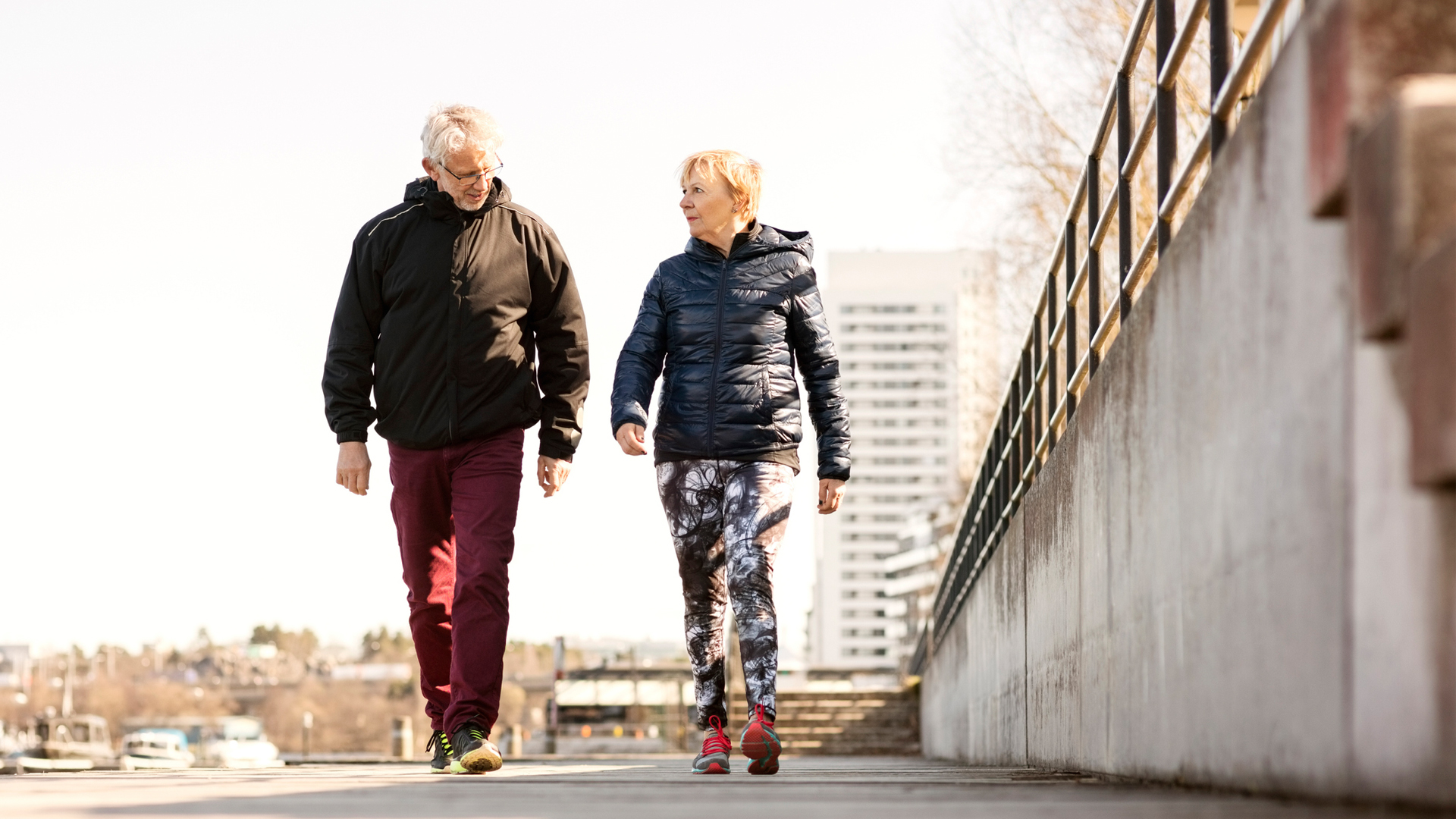How walking exercise keeps us supple and strong as we age
Walking exercise is low-cost, effective and versatile and contributes to our health more than you might think by helping to keep us strong and supple


Many of the things that are best for our health are simple and straightforward – something that walking exercise can easily prove. It’s tempting to assume that good health requires money and time, whether that’s an expensive gym membership or hours spare to spend taking part in intense exercise regimes, but that doesn’t have to be the case.
Walking as exercise is useful for anyone who might find themselves intimidated by the idea of running outside or joining a gym, so it’s a great entry point for those looking to get healthier and move more but who may not know where to start. It’s also easy to incorporate into your daily life and accessible for most people regardless of their starting fitness level. Allied to that, the cost of getting involved in walking more for exercise doesn’t need to be expensive, with the best shoes for walking often available for a reasonable price.
How does walking improve health?
How exactly can walking help improve our health? We spoke to performance coach Arj Thiruchelvam, of Performance Physique, who has worked with an array of exercisers, from complete beginners to pro athletes. He recommends walking more as a way for anyone to boost what’s called non-exercise activity thermogenesis.
“This is a fancy way of saying activity which isn’t exercise,” says Thiruchelvam. “This kind of activity often contributes more to burning calories than a gym session. You spend around 16 hours of the day awake and the more you move, the greater the chance of burning calories simply by taking more steps.”

Arj Thiruchelvam has more than 16 years experience working within the sports, nutrition and health sector, using science to coach novices right through to Olympic athletes. He has also help to co-designed two Sports Science Degrees for Oxford Brookes University in the U.K.
Walking can act as a workout for the whole body, as well as helping with stress management, improving mental health and giving you an extra boost of natural daylight when walking outdoors. However, some areas of the body may benefit more than others.
“Although walking isn’t a form of strength training, you will still find that your quadriceps, hamstrings and calves all have to contribute and therefore you will work these muscles,” says
Thiruchelvam. “Most importantly, your cardio-respiratory system, your heart and lungs, will have the greatest benefit.”
How many steps should I do each day?
Despite sometimes hearing that we should be aiming for 10,000 steps a day, there’s really no set amount of walking that you need to aim for. What’s important is that you get your heart rate up and work on challenging yourself, rather than aiming for a set amount of steps.
Start your week with achievable workout ideas, health tips and wellbeing advice in your inbox.
“Rather than fixating on a number for something to count as exercise, it’s more about your formalized effort to walk with some vigor rather than having a leisurely stroll,” says Thiruchelvam. “Try to make it a focused effort, whether that’s first thing in the morning, on your lunch break or after dinner.”
Walking is generally not as intense as other forms of exercise, such as running or strength training. However, for those who are new to exercise or haven’t exercised in quite a while, a fast-paced walk can provide an effective cardiovascular workout. “Over time you should improve and it’s at this point you should continue to challenge yourself,” says Thiruchelvam.

How can I make walking exercise more challenging?
Once you’ve got into a routine of walking regularly, you can then make things more challenging for yourself to really take your fitness to the next level. Thiruchelvam suggests changing your route to include more hills for an extra challenge or even changing your terrain from the pavement to the countryside, which will give the muscles in your feet, ankles and calves an extra workout.
However, whatever your fitness level, it’s important to not push yourself too hard too quickly, especially if you’re recovering from a recent injury. Although walking is not as intense as some other forms of exercise, it’s all relative to your current fitness and activity level, so it can be a perfectly adequate form of exercise for many.
“If you’ve suffered an injury recently or have health issues, you really should consult your GP or MD before commencing any form of exercise,” says Thiruchelvam. “If you have been prevented from walking due to an issue, then walking is considered a form of exercise. Don’t pressurize yourself by saying ‘it’s only a walk’. Whether you need a walking aid or regular breaks, that’s fine. You should be focusing on improving your health in a gradual and consistent manner.”
Rachel is a freelance writer and editor, based in the UK, specializing in entertainment and lifestyle content. When not writing, she enjoys yoga, travel and obsessing over tiny dogs. She writes reviews, articles and round-ups for several Future Plc sites, including Fit&Well and Top Ten Reviews.
